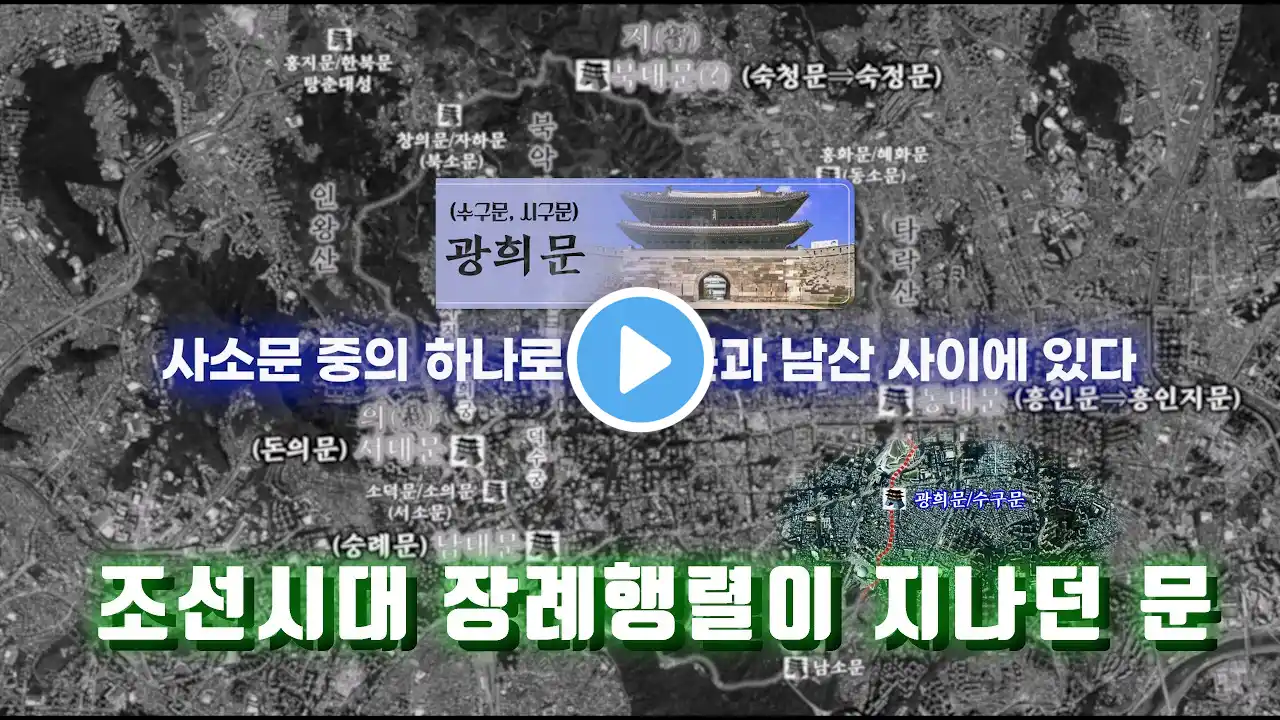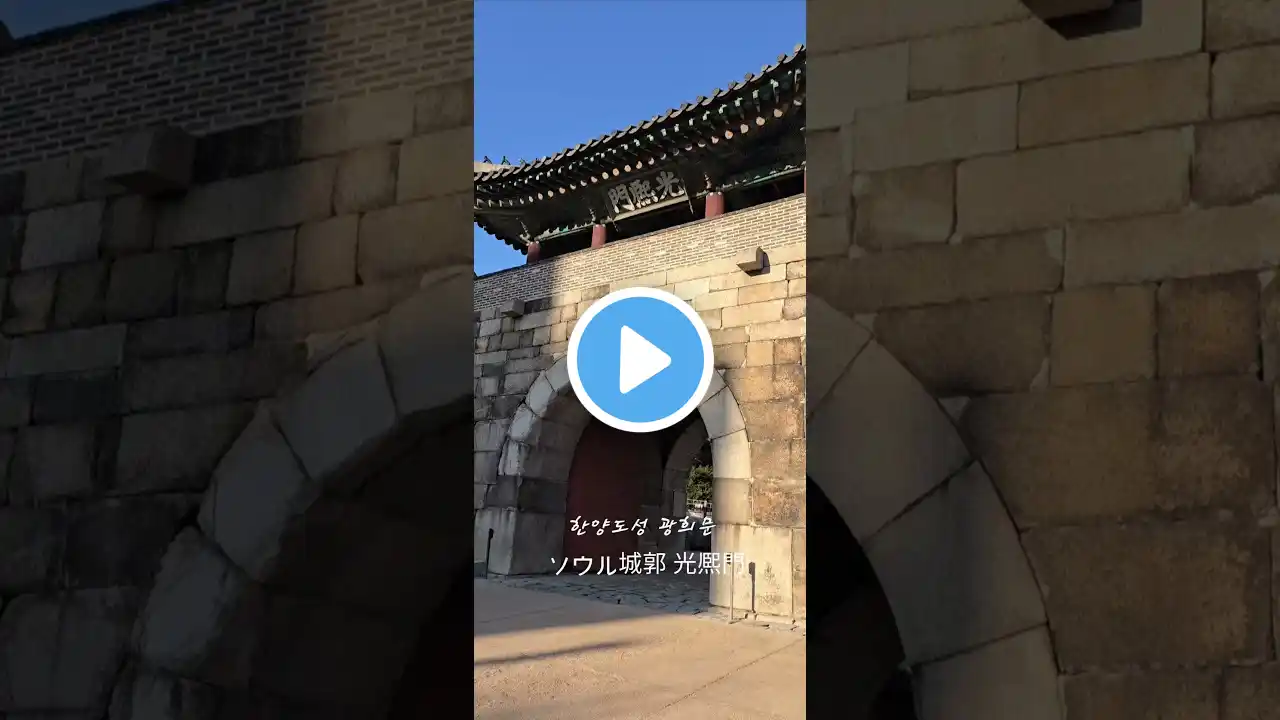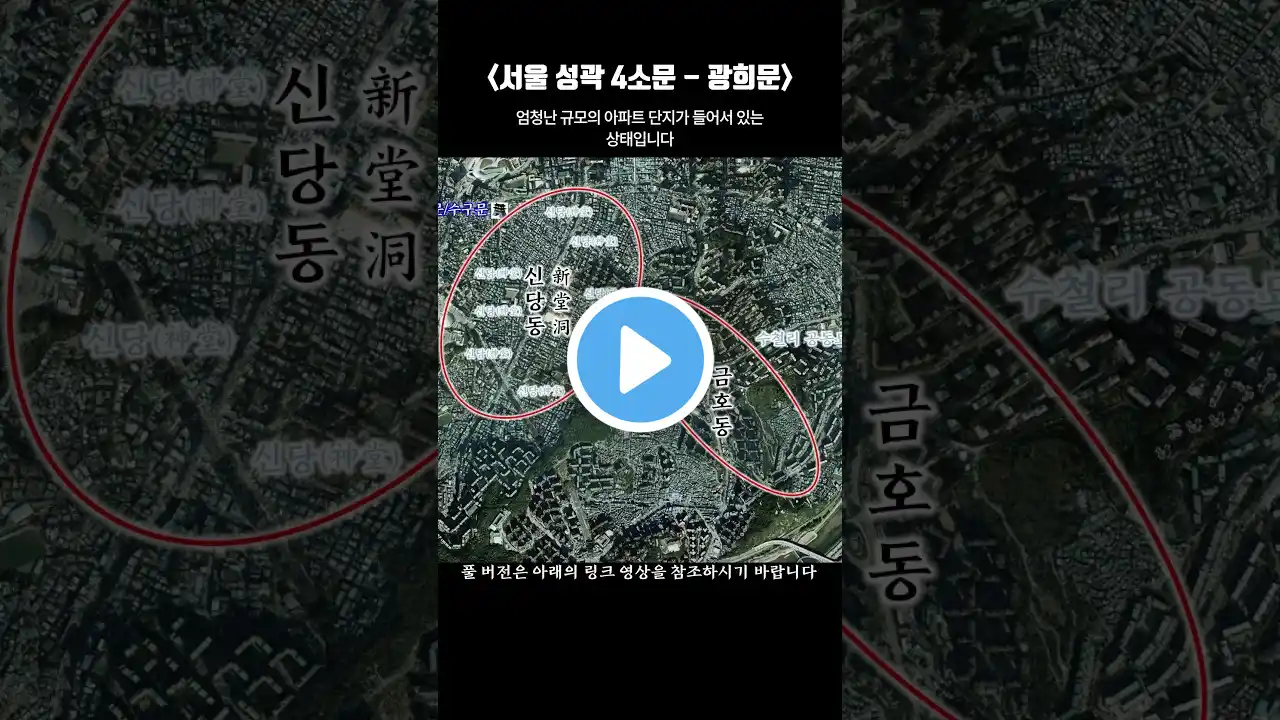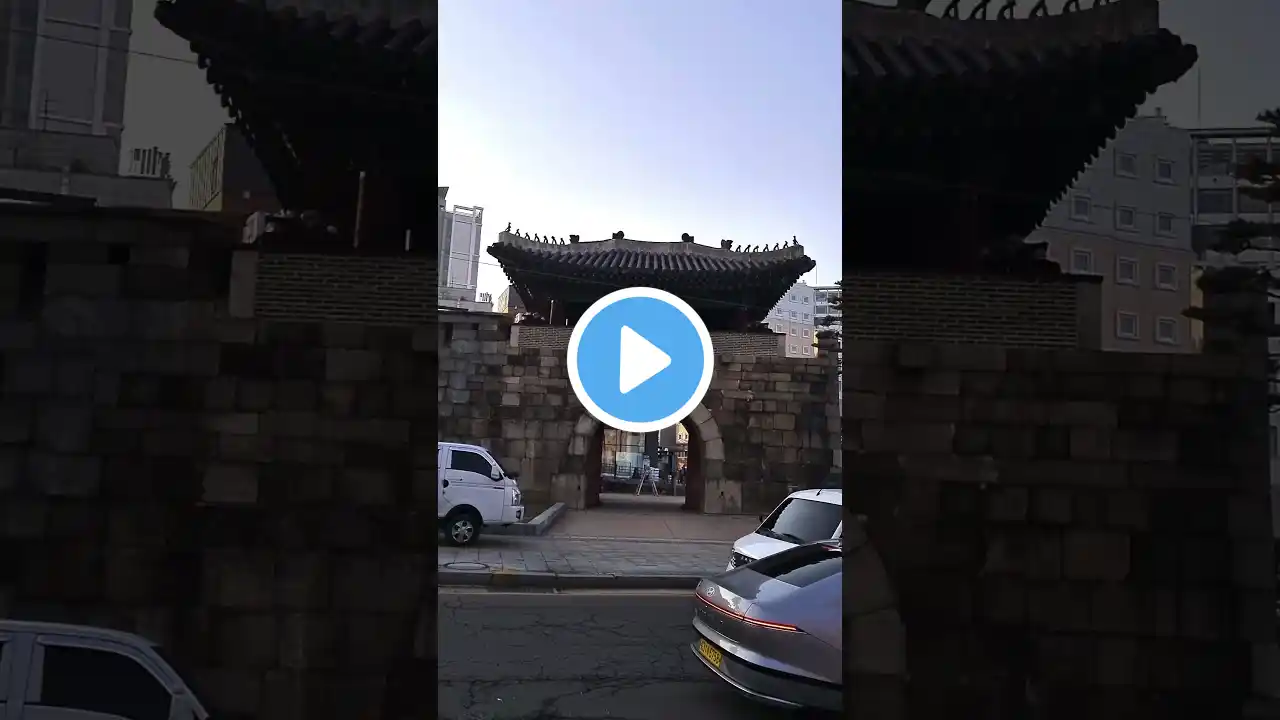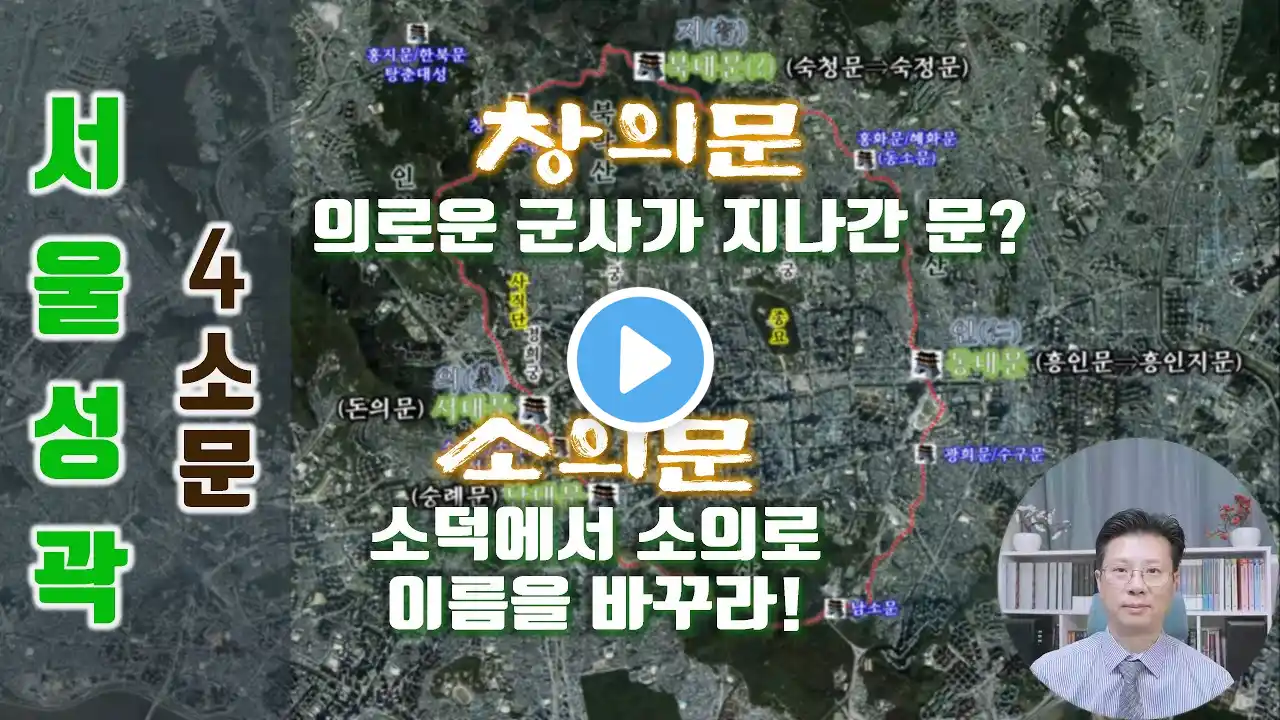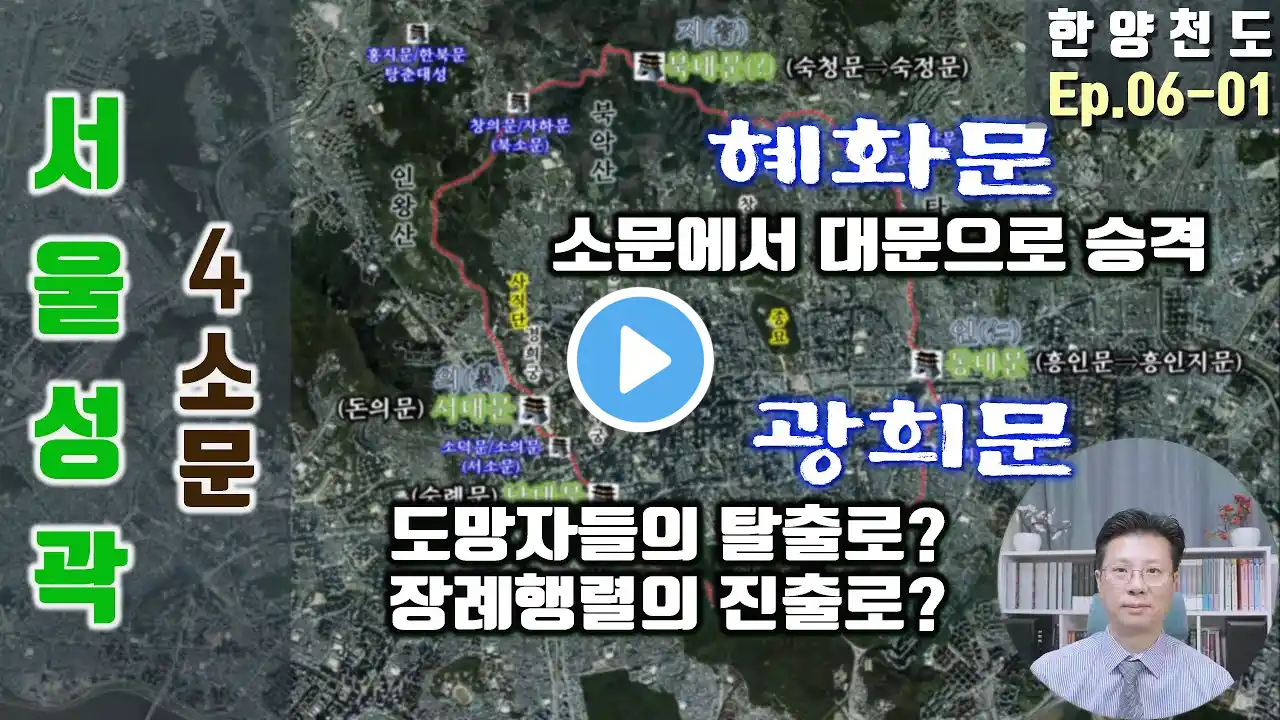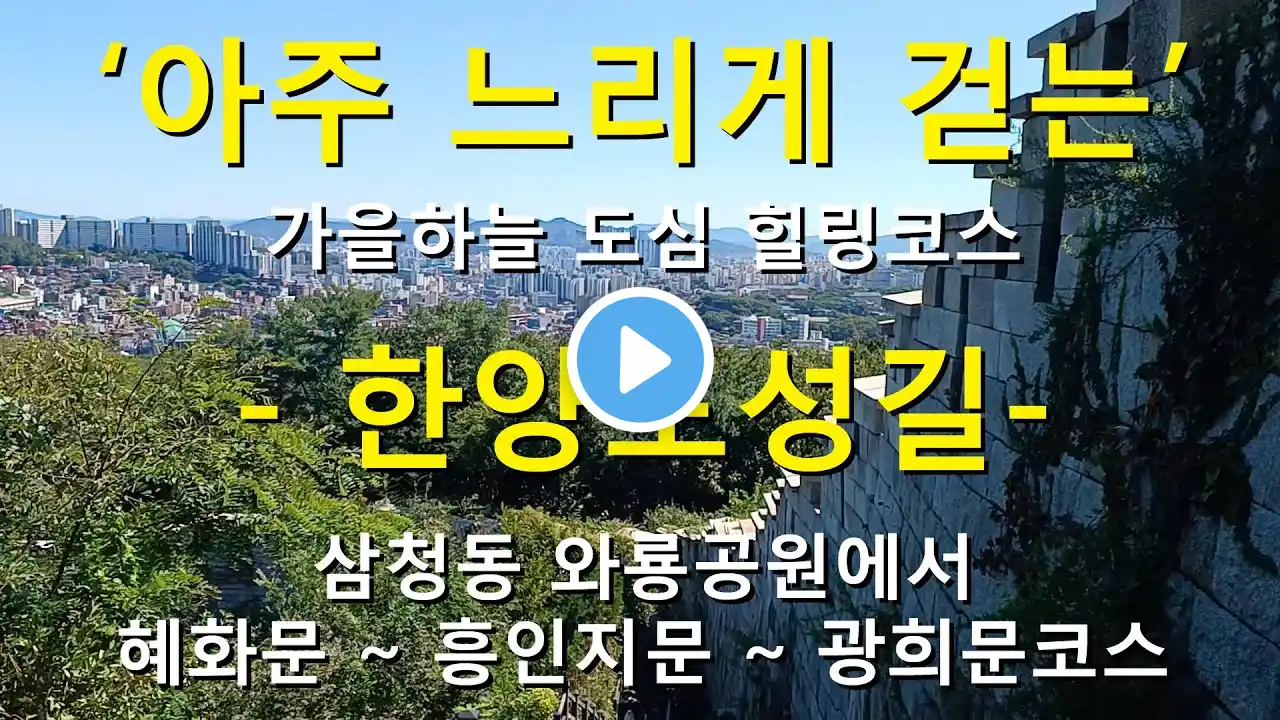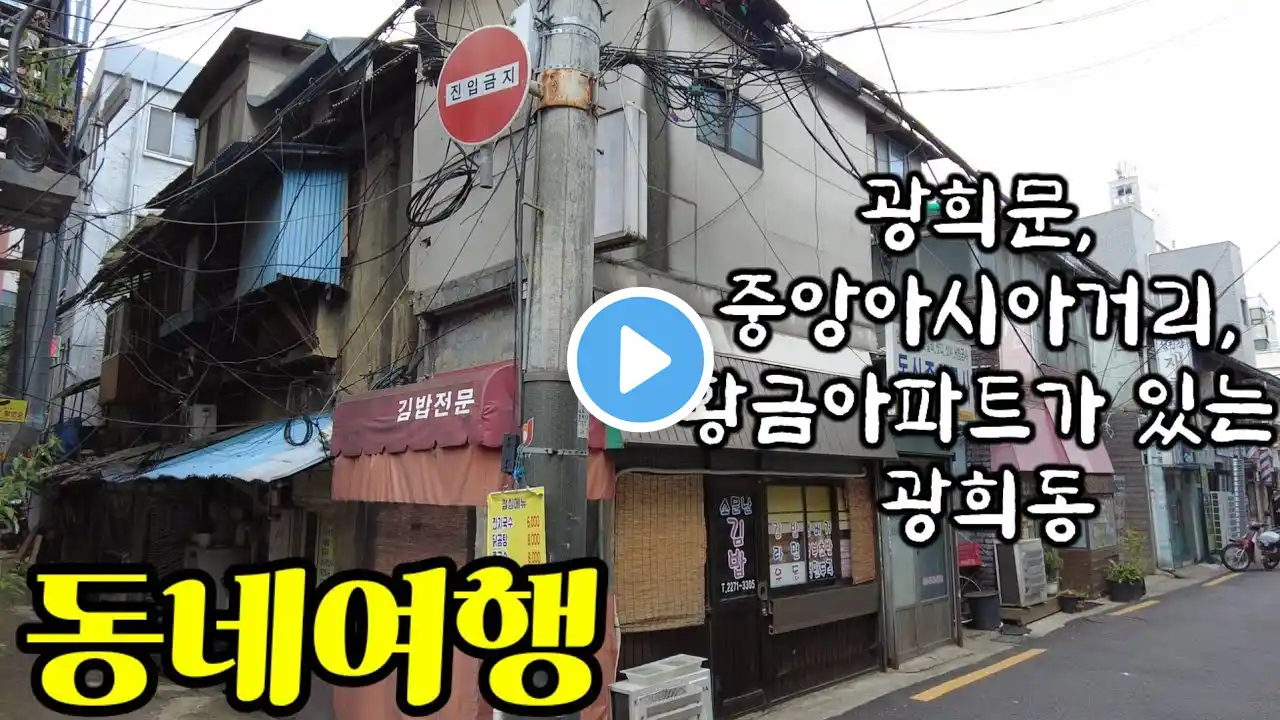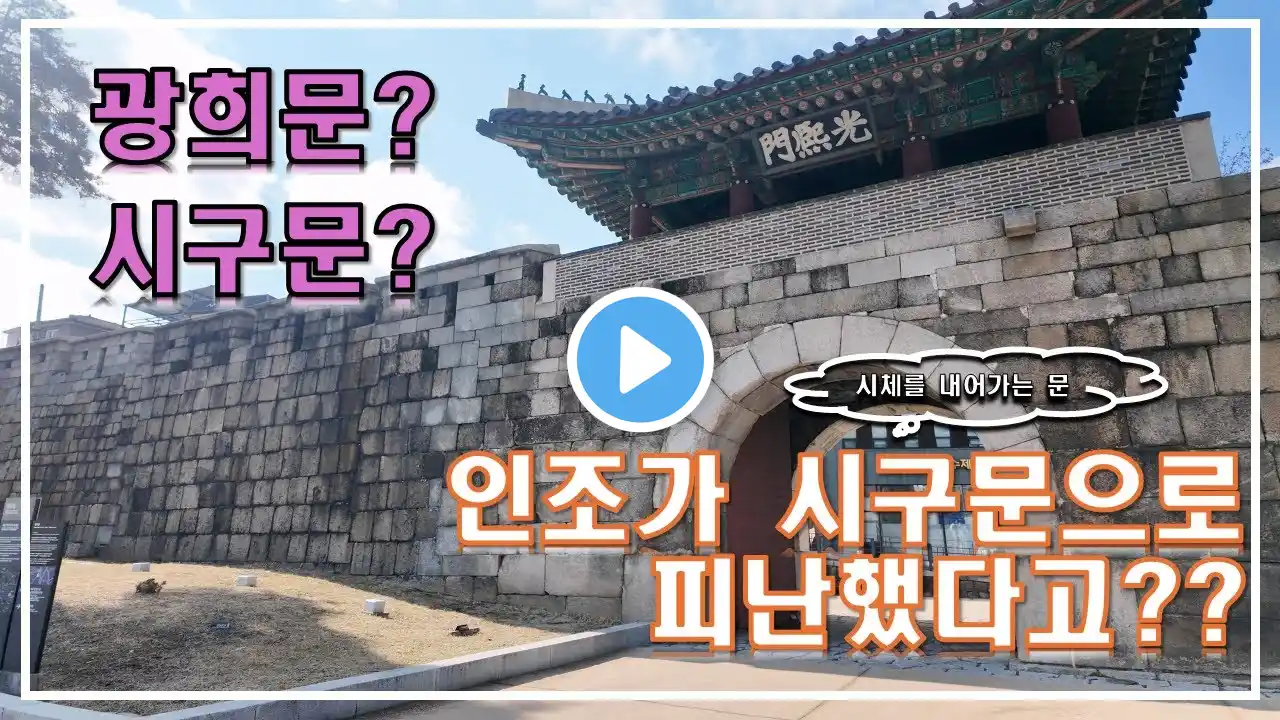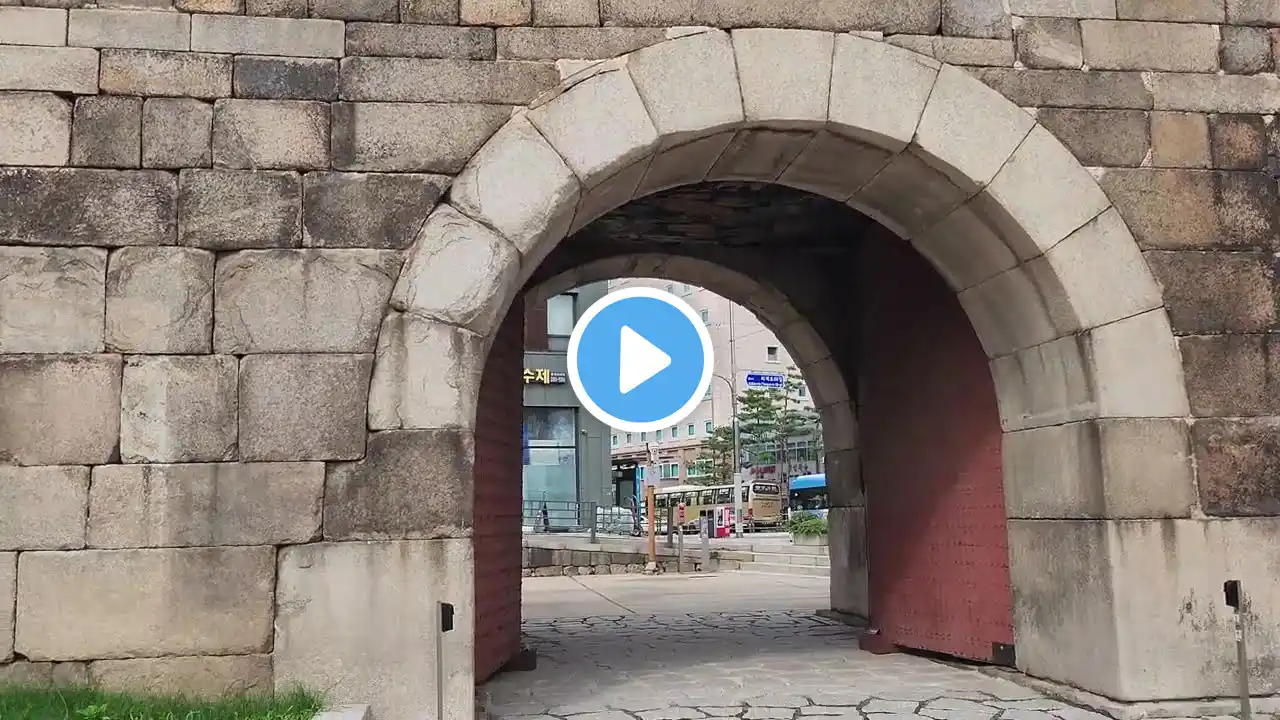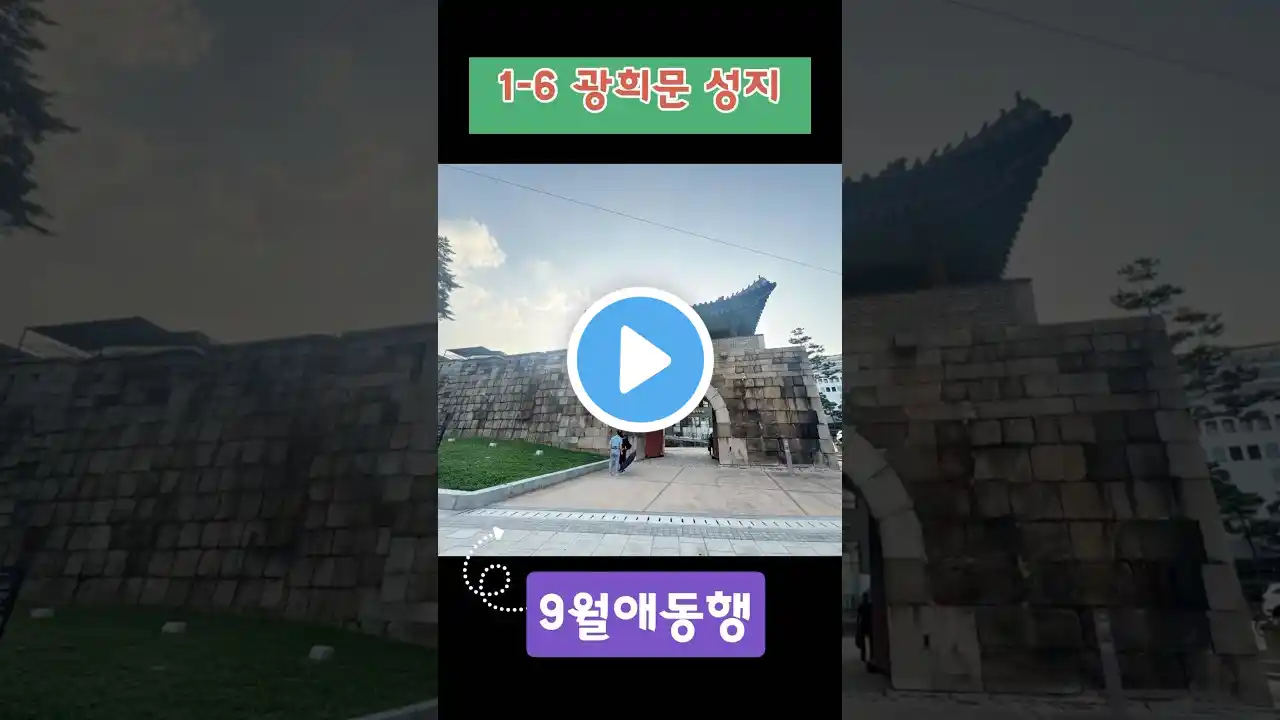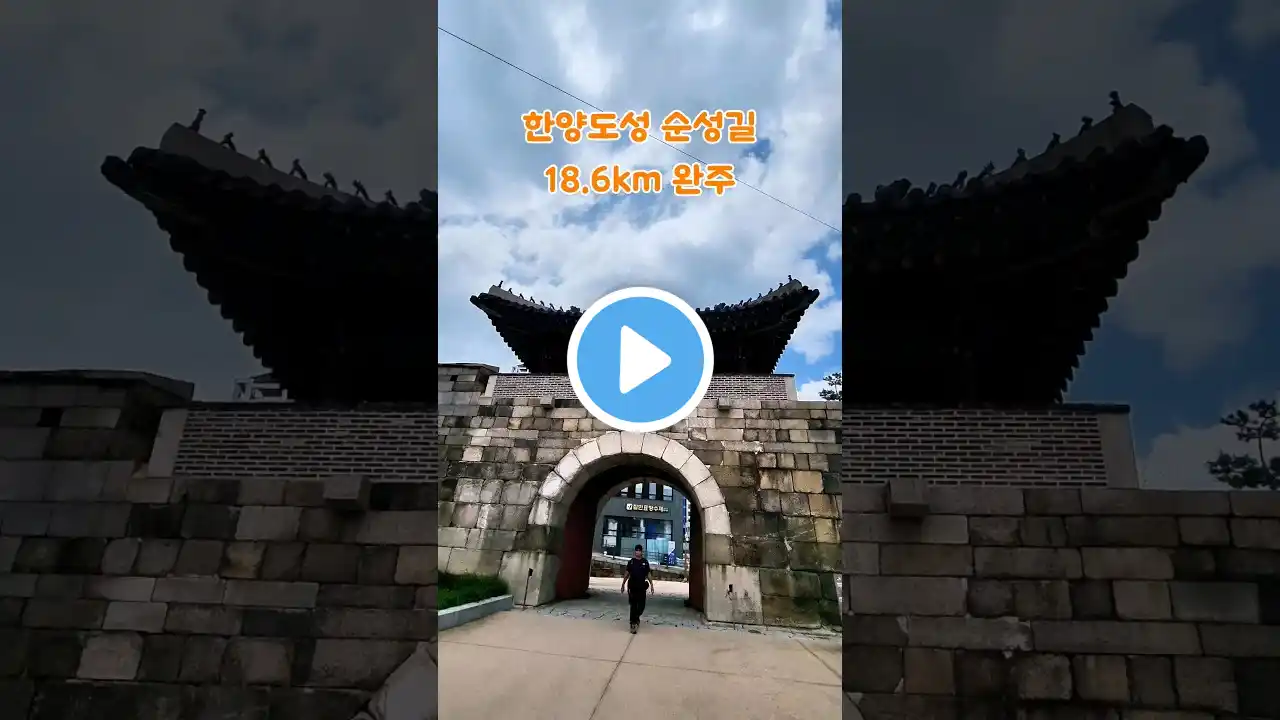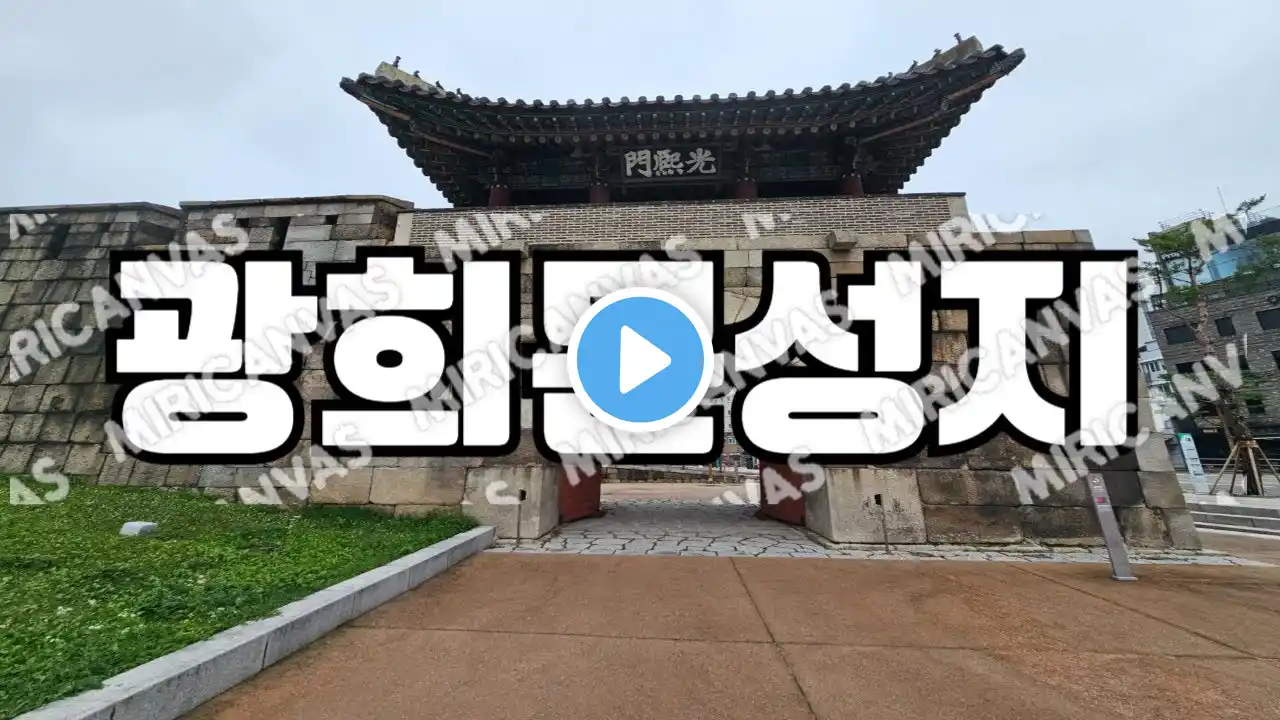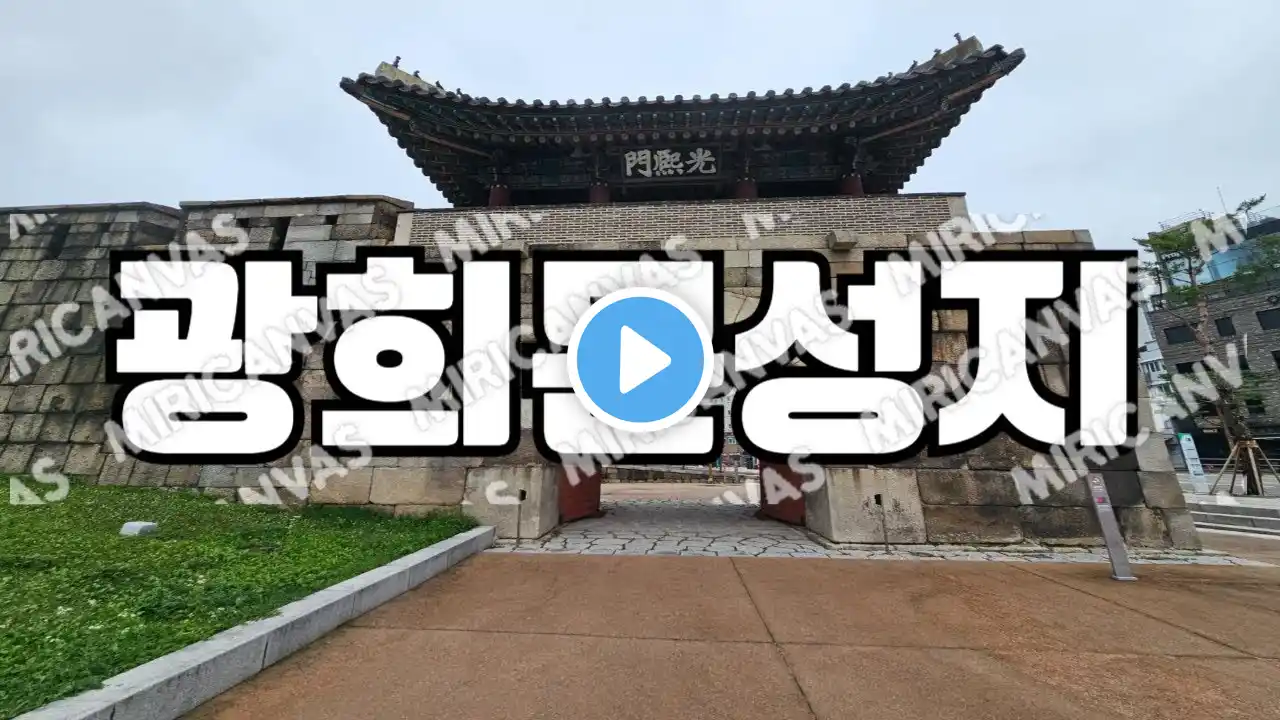
Gwanghuimun Gate, Seoul, Korea - 광희문
Gwanghuimun Gate, Seoul, Korea - 광희문 info: Along with the Seosomun (West Small Gate), the Gwanghuimun was one of the gates through which dead bodies were taken out of Seoul. It was built when Seoul's fortress walls went up in 1396, and it was rebuilt in 1422. In 1711, on the suggestion of scholar-official Min Jin-hu, it was rebuilt again by the capital garrison. The pavilion was built a bit later due to difficulty in procuring wood. In 1717, the pavilion was completed and a signboard with the name Gwanghuimun was hung. As part of the 1975 project to restore parts of the city walls, the stone gate was repaired and the wooden pavilion rebuilt. 시구문(屍軀門) ·수구문(水口門)이라고도 하였으며 서소문(西小門)과 함께 시신(屍身)을 내보내던 문이다.1396년(태조 5) 도성을 축조할 때 창건되었으며, 1422년(세종 4) 개축된 것으로 추측된다. 《숙종실록(肅宗實錄)》에 1711년(숙종 37) 민진후(閔鎭厚)의 건의로 금위영(禁衛營)으로 하여금 개축하게 하고, 문루(門樓)는 목재를 구하기가 어려우므로 후에 개축하기로 하였다는 기사가 있으며, 1719년 문루를 세워서 광희문이라는 현판을 걸었다. 그 후 1975년 도성복원공사의 일환으로 석문을 수리하고 문루를 재건하였다.
